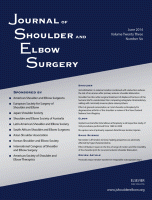
This is a study I performed looking for risk factors of dislocation after reverse shoulder arthroplasty, and treatment options. Closed treatment (non-surgical) treatment was effective, which is slightly against a lot of opinions out there that believe these must be addressed surgically. While a subset population in our study group ultimately required surgery for this problem, ultimately, a course of nonoperative treatment is warranted, we believe.
Full copy of abstract below, if you’d like a copy of the article please email me.
Jump ahead to:
ToggleAbstract
BACKGROUND:
Postoperative instability continues to be one of the most common complications limiting outcomes of reverse shoulder arthroplasty (RSA). The optimal management of this complication remains unknown. The purpose of this study was to evaluate the outcomes of patients with postoperative dislocation after RSA managed with closed reduction.
METHODS:
All patients who were treated with a closed reduction for dislocation after RSA in the period between May 2002 and September 2011 were identified and retrospectively reviewed. Final outcomes including recurrent instability, need for revision surgery, American Shoulder and Elbow Surgeons outcome score, and range of motion were evaluated.
RESULTS:
A total of 21 patients were identified. Nearly 50% of cases (10 of 21) had previous surgery, with 80% (8 of 10) of these being previous arthroplasty. The average time to first dislocation was 200 days, with 62% (13 of 21) occurring in the first 90 days. At average follow-up of 28 months, 62% of these shoulders remained stable (13 of 21), 29% required revision surgery (6 of 21), and 9% remained unstable (2 of 21). The average American Shoulder and Elbow Surgeons score was 68.0 for patients treated with closed reduction for instability and 62.7 for those treated with revision surgery (P = .64).
DISCUSSION:
This study shows that an initial dislocation episode after RSA with use of this implant can be successfully managed with closed reduction and temporary immobilization in more than half of cases. Given that outcomes after revision surgery are not different from those after closed treatment, we would continue to recommend an initial attempt at closed reduction in the office setting in all cases of postoperative RSA dislocation.
Copyright © 2014 Journal of Shoulder and Elbow Surgery Board of Trustees. Published by Elsevier Inc. All rights reserved.

